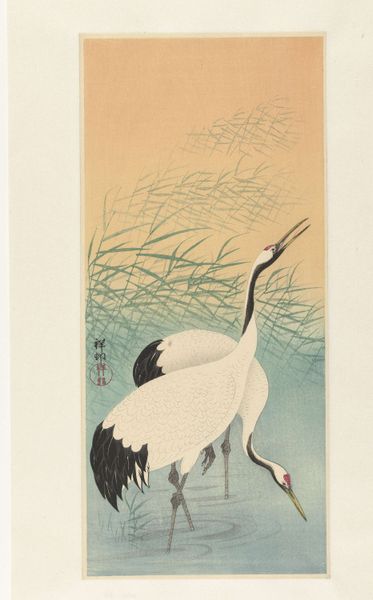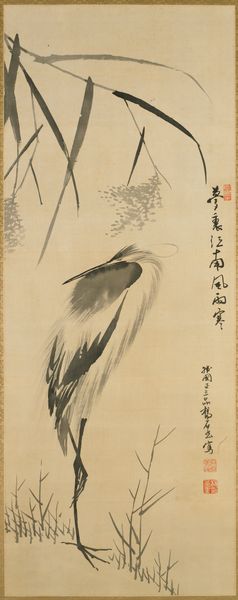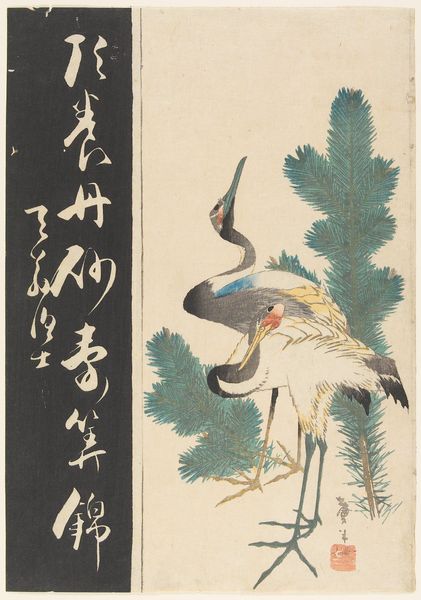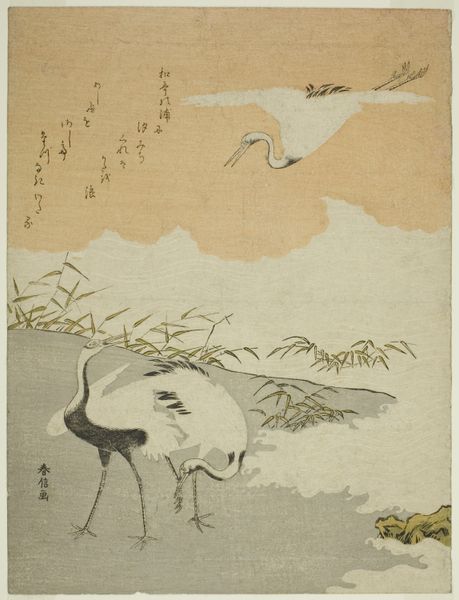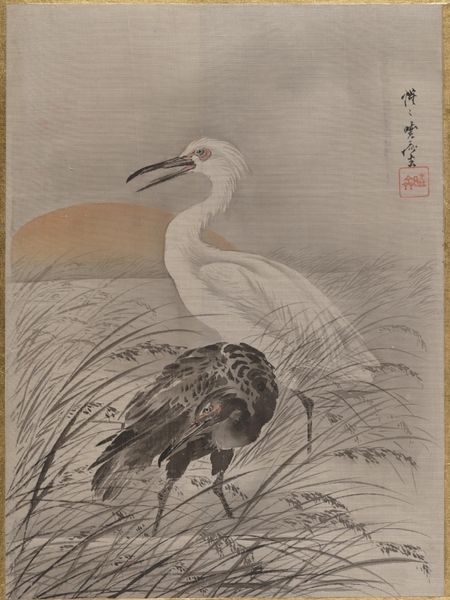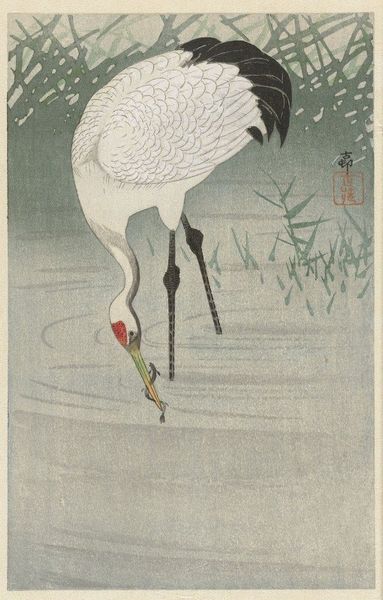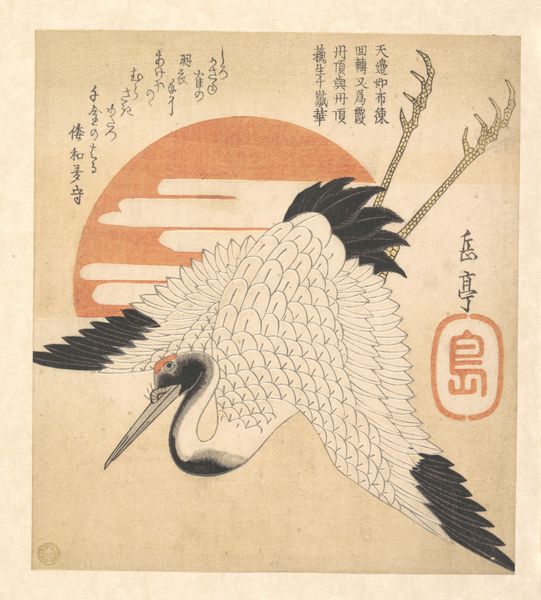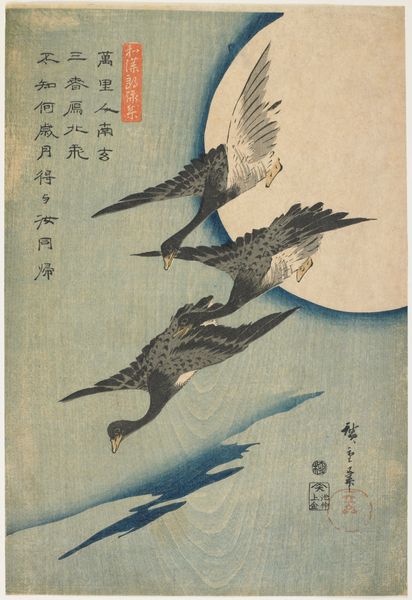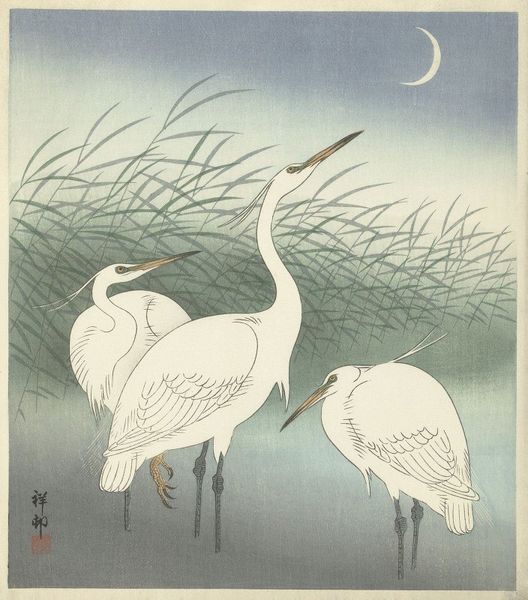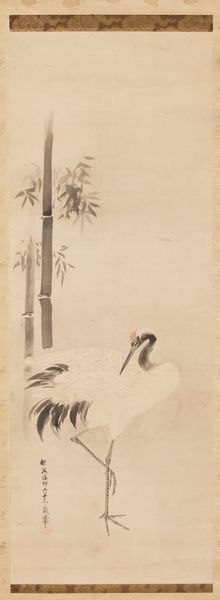
#
toned paper
#
light pencil work
#
childish illustration
#
caricature
#
personal sketchbook
#
portrait drawing
#
watercolour illustration
#
cartoon style
#
cartoon carciture
#
watercolor
Dimensions: height 206 mm, width 181 mm
Copyright: Rijks Museum: Open Domain
Totoya Hokkei made this woodblock print of a crane before the first sunrise of the year in 19th-century Japan. It is a society that had been isolating itself from the West and turning inward, solidifying its own traditions. As a student of Hokusai, Hokkei worked in the ukiyo-e style, translating as “pictures of the floating world." Though it seems straightforward, the image is full of symbolism. The crane is a symbol of longevity and good fortune in Japanese culture, often associated with the New Year. The rising sun is also a symbol of hope and renewal, relevant to Japanese Shinto beliefs about purity. It is a fitting image for celebrating the start of a new year. The print reflects not just Japanese beliefs but the country’s economic and political conditions at the time. Woodblock prints were affordable, catering to the rising merchant class, showing their desire for beauty and sophistication. Looking closer, through historical records, we can understand its deeper meaning within its social context.
Comments
No comments
Be the first to comment and join the conversation on the ultimate creative platform.
